THE PROCESS: EXCHANGE OF CREATIVITY
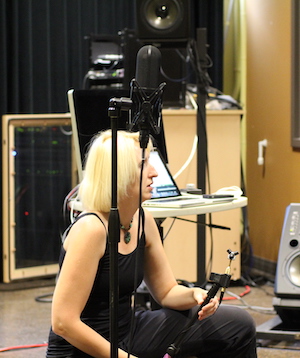
Each of these artists will leave their distinct mark during this process, and their unique voice will be forever woven into the texture of the emerging work. For me it creates a personal connection to the work, firmly anchored in space in time, that cannot be replaced or erased from my memory.
I describe my method as guided improvisation and find my role similar to a film director: directing a spontaneous creation of musical entities while responding to the space, and each other, with a continuous feedback loop.
MY PROCESS
- Recording sessions in full surround in acoustically unique spaces, often capturing their pattern of reflections (measurement of impulse response).
- Directed improvisation and collaboration result in pre-recorded material, bound to a specific time and space
- A series of electroacoustic soundscapes is created based on that original material
- Instrumental parts for future performances are somewhat derived from that original material, sometimes a single motive serves as a “seed” and the entire piece grows out of like a plant
- The live performances and the pre-composed soundscapes are superimposed in the concert performance, resulting in a labyrinth of soundscapes, a mesh of time and space unique to that particular instance.
- Often the instrumental parts contain elements of improvisation - this lets the piece live its own life and evolve with each space. This is usually true for solo or small ensemble works.
- In my works for large ensembles, the improvisation and direct collaboration with musicians is usually limited to selected aspects. It is hard, if not impossible to engage a large ensemble (such as an orchestra) in improvised recording sessions or to drag them into an underground hole.
- If the instrumental parts already existed in some form before the recording sessions, then they are likely to be modified in response to the recordings.
Case 1 : Minotaur for horn and surround sound
The electronic layer was created in a series of Ambisonic field recording sessions, in collaboration with Seattle-based horn player Josiah Boothby, in a process similar to film production. This pre-recorded material served as the foundation for the spatial soundscape (fixed-media layer).
- The written score is a selection of meeting points between the pre-recorded surround sound material and the live performance.
- The soloist is encouraged to wander off the musical material written in the score.
- The player should enrich it by freely utilizing right hand coloration, articulation changes, microtonal melismas and ornaments, while carefully listening to and interpreting the responses from the performance space.
For practicing purposes, the piece has been divided into 10 sections. Each section corresponds to a separate audio track in the fixed-media layer.
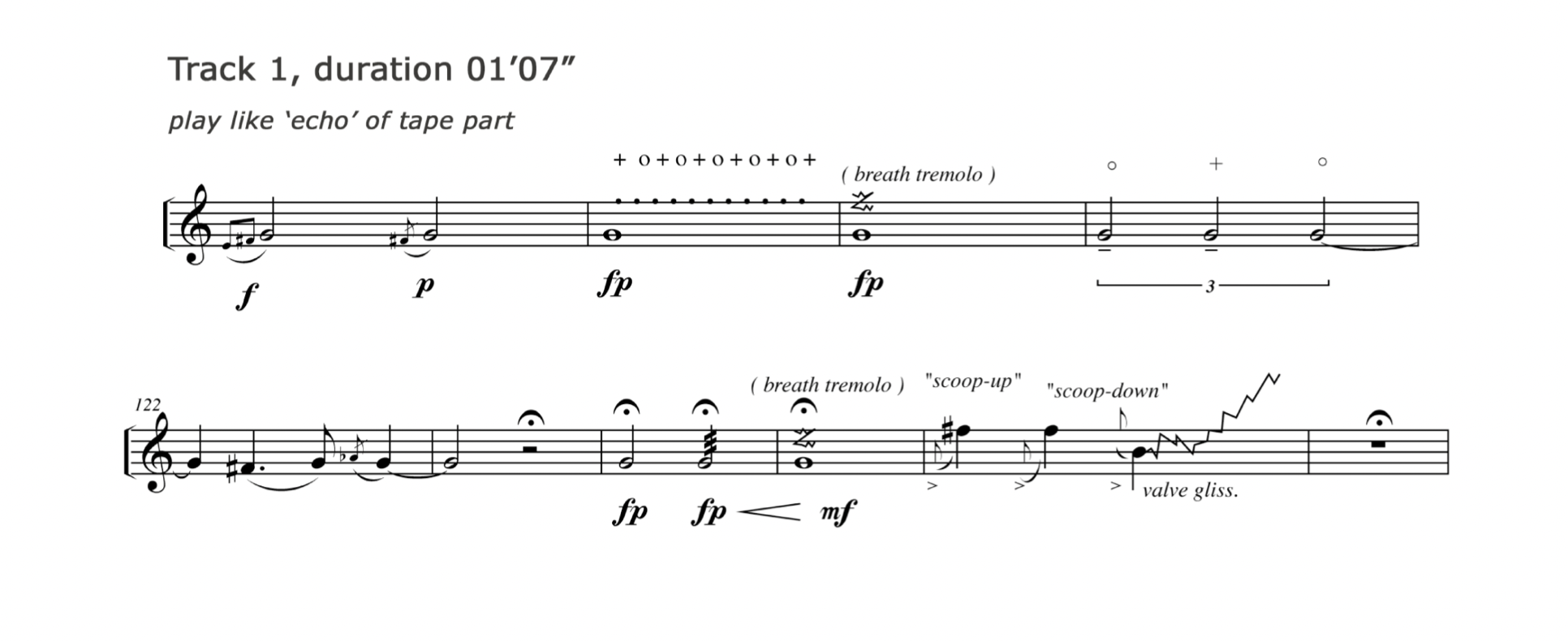
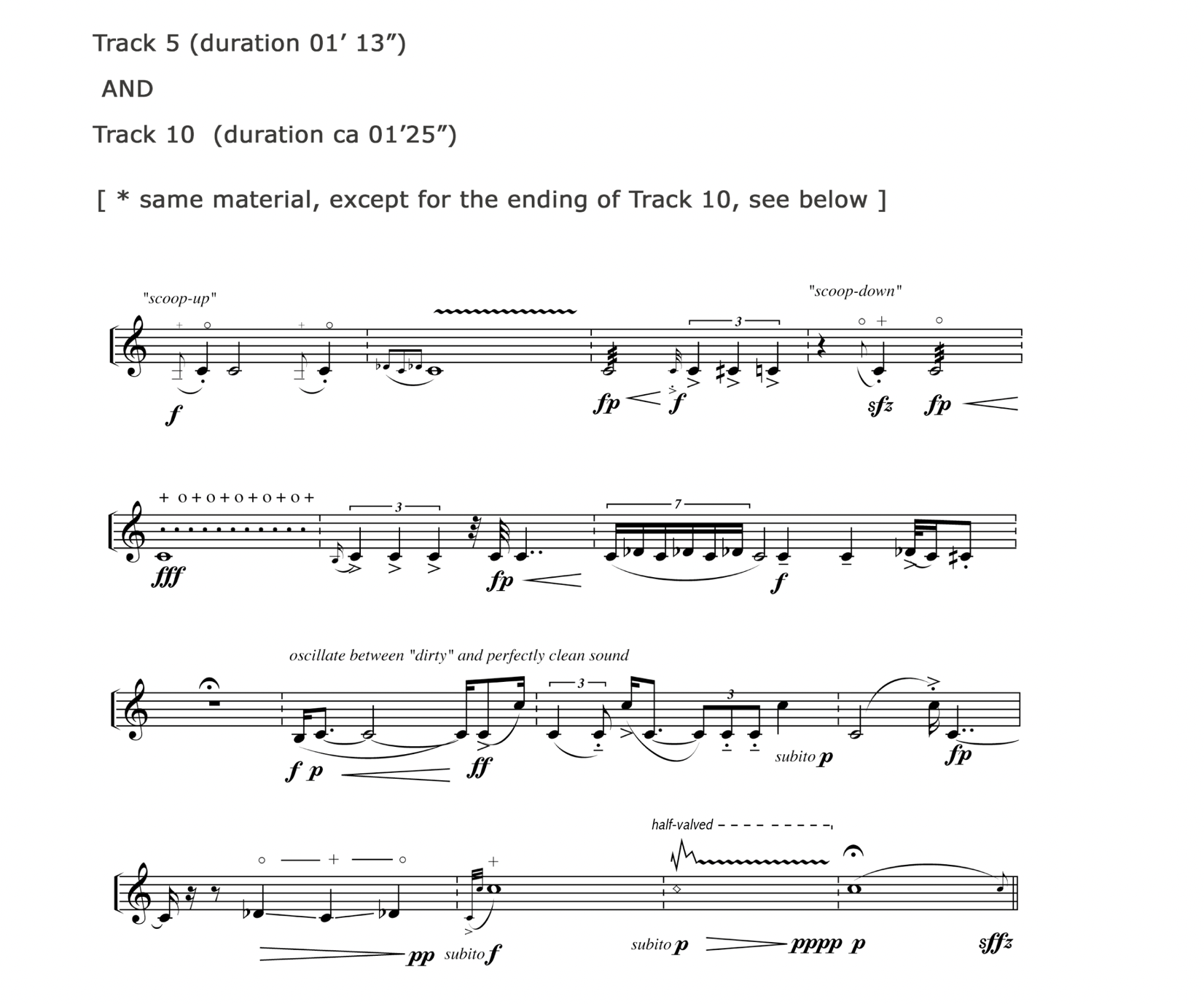
Detailed instructions for the performer can be found here...
Case 2: Inanna Descending for Ambisonic sound and variable ensemble
The piece is not intended for any specific ensemble, it can be interpreted by any group following the video “score” and simply responding to the Ambisonic soundscape. The video score (Pitch Map) serves as visual guidelines for practicing and rehearsing. There is no printed sheet music in a traditional sense.
The video should be used as help for musicians in the process of learning the piece and as guidelines for improvisation. It should be used as reference while navigating through the form of the piece and learning the sections. Each musician should "extract" their own part based on this suggested pitch material. There are some suggestions regarding articulation and dynamics, but not meant for any specific instrument. Anyone can play or sing.
General improvisation map:
Example of an "extracted" part - bandoneon:
Case 3: things lost things invisible for Ambisonic space and orchestra
- a concerto grosso with virtual soloists?
The initial sound material was recorded by Ewa Trębacz inside the famous Dan Harpole Cistern in Fort Worden, Washington State. Musicians were given specific pitch material and asked to improvise just articulation in response to the space and to each other.
Josiah Boothby - French horn, Tony Penk - trumpet, Colby Wiley - trombone
This material later became the core of the electronic layer of the piece. Because of the distinct character of the space, and prominent features of the sound material, I decided to use the term “virtual soloists” to describe the role of these musicians.
Interestingly enough, the piece was later classified as a concerto grosso by Polish musicologist Andrzej Chłopecki (and I must agree that it can be seen as a peculiar mutilation of this genre - with virtual soloists).
Case 4: Ligeia for invisible soprano, ensemble and surround sound
- "we grew music grew like a plant from a single seed..."
For this piece I first invited French horn player Josiah Boothby for a short recording session in which he improvised a limited number of musical gestures. This initial material was then passed to soprano Anna Niedźwiedź in Kraków, Poland. I asked Anna to try to sing the exact same gestures that Josiah improvised on his horn. We called those short phrases “seeds” as we intended to grow music like a plant.
SEEDS AND RESPONSES: Josiah Boothby - French horn, Anna Niedźwiedź - soprano
In September 2015, while Anna was in Seattle, Josiah, Anna, and I went to Fort Worden, Washington to explore the acoustics of the WWI era bunkers and gun emplacements. I joined Josiah and Anna with my violin, forming a trio. However it was Anna’s creative energy that became the main driving force for these recording sessions. She is effectively the invisible soloist in this piece.
These processed recordings were used to create a skeleton of the electronic part and later to sketch out the instrumental parts, the excerpt below represents the trio.
Josiah Boothby - French horn, Anna Niedźwiedź - soprano, Ewa Trębacz - violin
Case 5: Metanoia, violin concerto for an improvising soloist, string orchestra, and spatial soundscape
- solo part as an improvisation map
The instrumental parts are derived from the sound material in the electronic layer, and draw on two ancient types of performance practice: heterophony and improvisation. The solo violin part is partly notated, partly improvised. The soloist is expected to create his or her own unique responses to the notated phrases, in a dialogue with the electronic soundscape, the orchestra and the acoustic space.
The violin part is notated separately from the orchestral score and serves as a map for improvisation.
Movement 1 - Section B:
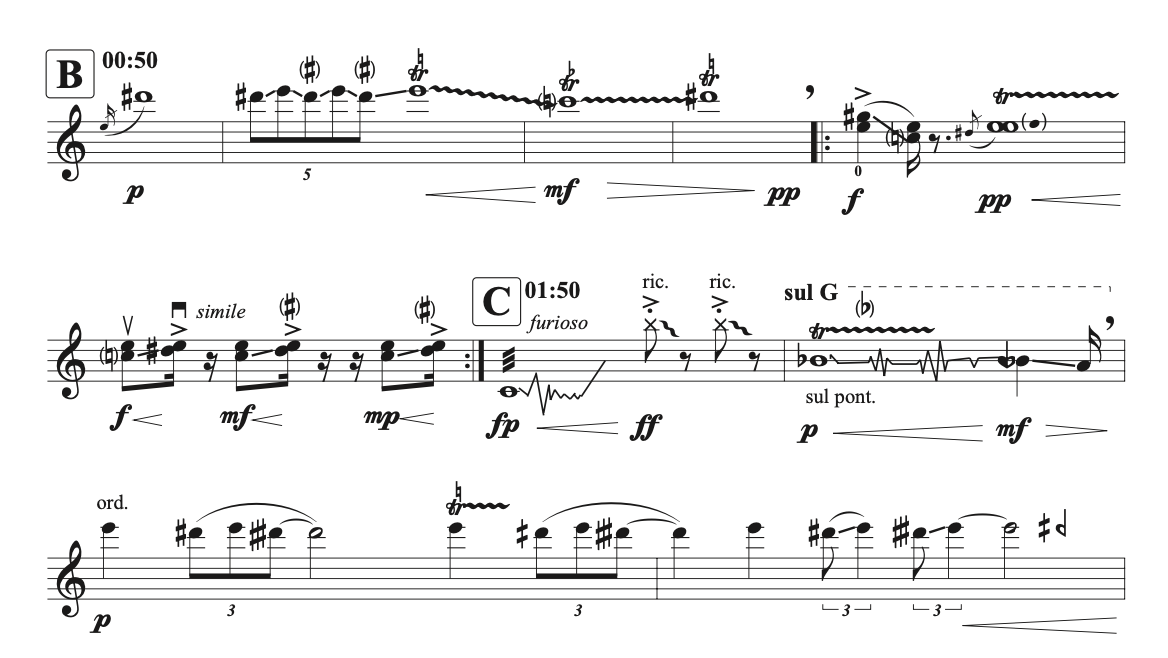
Sections and synchronization
- There is no strict synchronization with the electronic layer or with the orchestra.
- For practice purposes, each movement is divided into several sections marked by rehearsal letters.
- The timing indicated in the part makes a reference to the electronic layer and it is provided as an auxiliary help. The sound material should roughly fit within each section.
- All written rhythms and tempo markings are approximate.
Movement 2 - Section C:
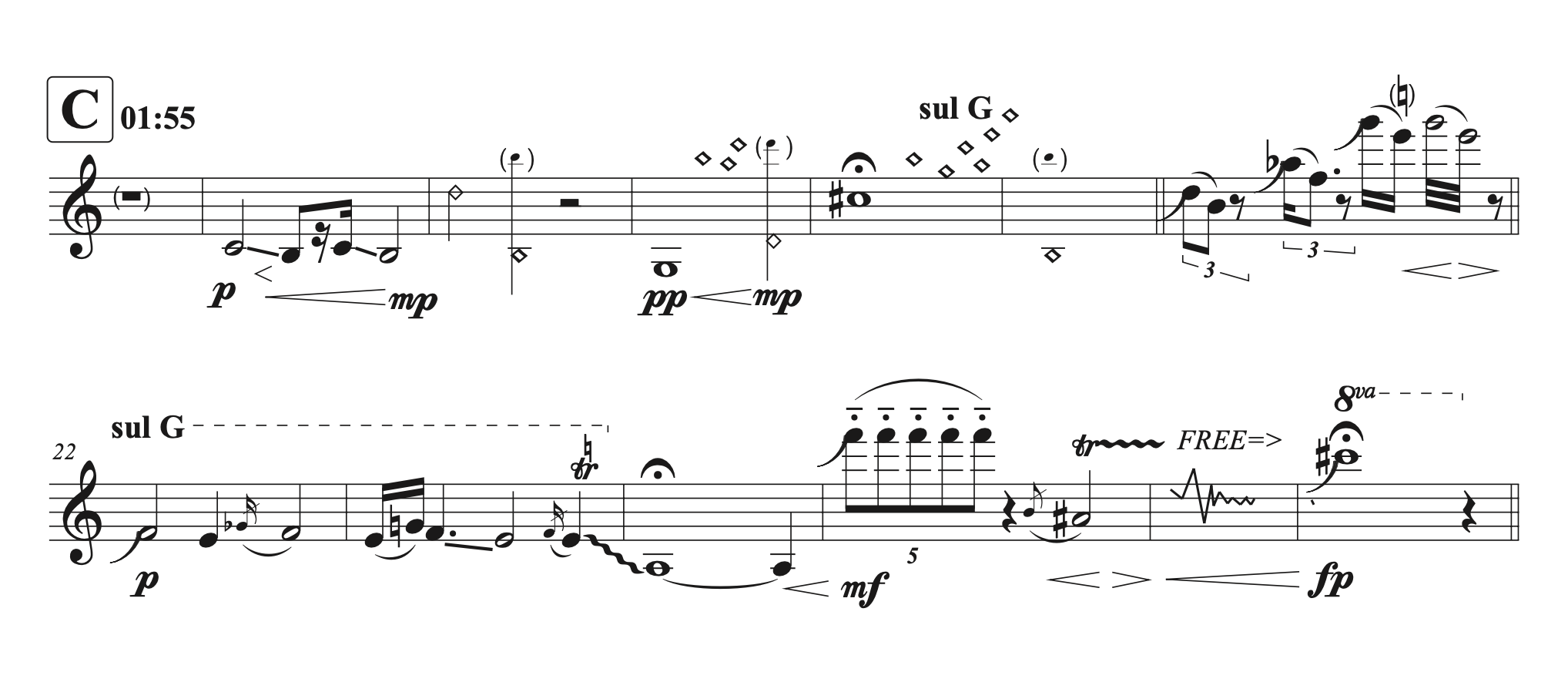
Motives and phrases
- These are merely suggestions of musical motives, phrases and events, based on the material in the electronic layer. Soloist-improviser should create their own responses to these motives and phrases.
- Any written phrase or motive can be repeated.
- Any written phrase or motive can be skipped (vary articulation, dynamics, add ornamentation, develop your own creative response and interpretation).
- The soloist is welcome to introduce their own variations of each of the motives or phrases
- Any additional sound material is welcome and left to the esthetic judgment of the soloist.
Movement 3 - Section H:
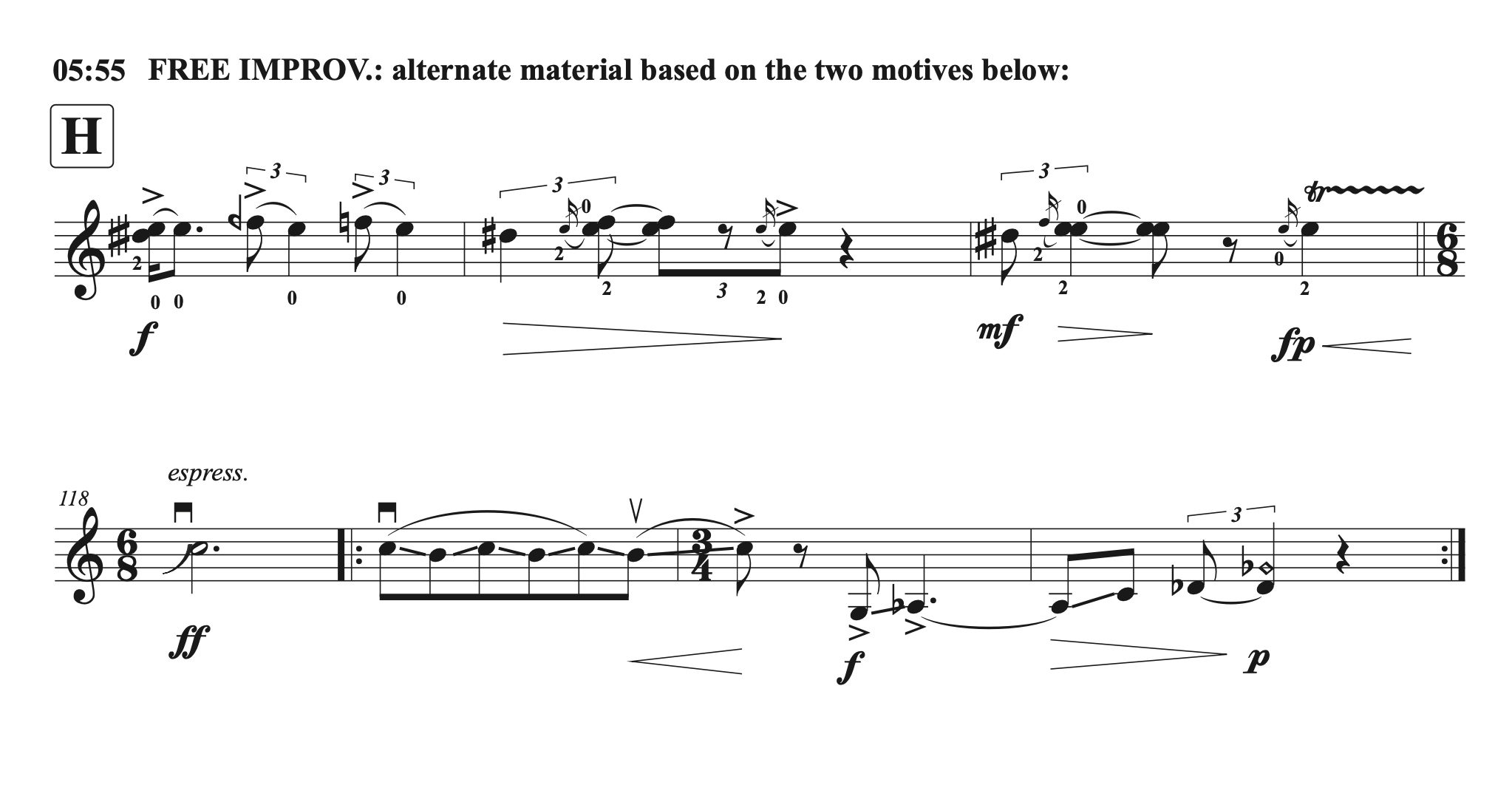
The electroacoustic layer is based on the sound material recorded by the composer using various Ambisonic microphones. These sounds include instrumental samples (Ewa Trębacz – violin, Josiah Boothby – French horn) as well as doors, gates and metal objects in Fort Worden bunkers and in the reactor building of the Satsop Nuclear Plant, in Washington State. The excerpt below is our violin-horn improvisation, which was later made its way into the 3rd movement of Metanoia.
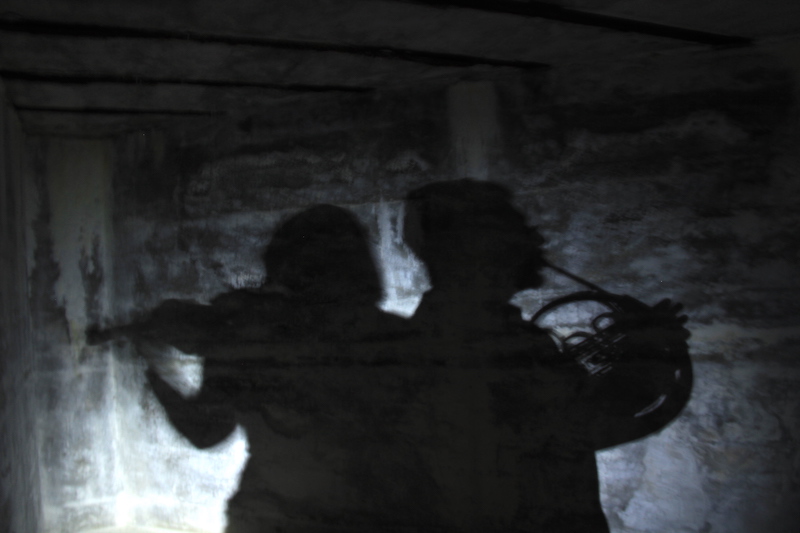
Ewa Trębacz - violin, Josiah Boothby - French horn (free improvisation)
Case 6: The Tower of Broken Mirrors and Satsop Nuclear Plant
The improvisdation excerpts below were recorded during our trip to CT3 cooling tower and the reactor building at Satsop Nuclear Power Plant, with horn player Josiah Boothby, and flutist Leanna Keith. We wandered around and improvised, and the spaces responded with their delays and echoes.
CT3 cooling tower
Reactor Building
Josiah Boothby - French horn, Leanna Keith - flutes, Ewa Trębacz - violin
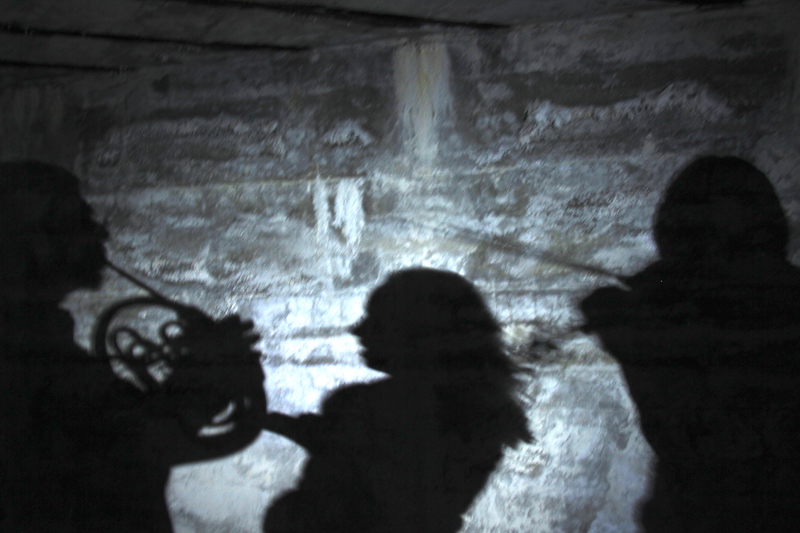
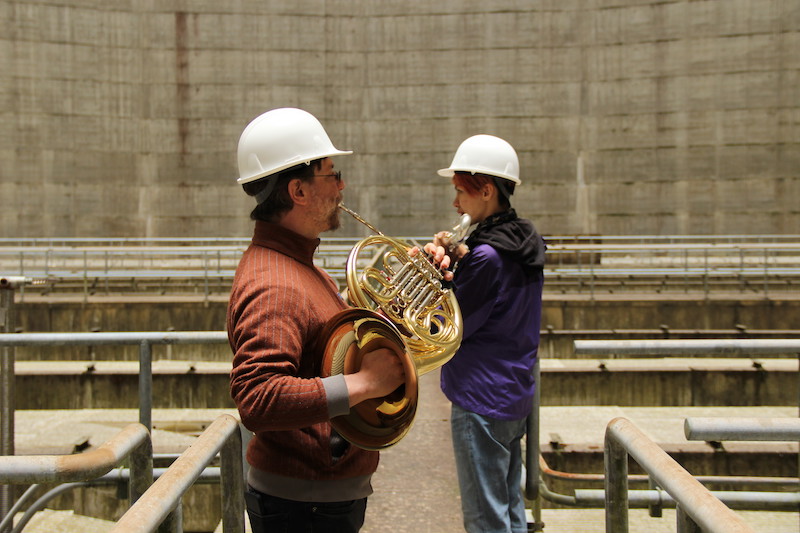
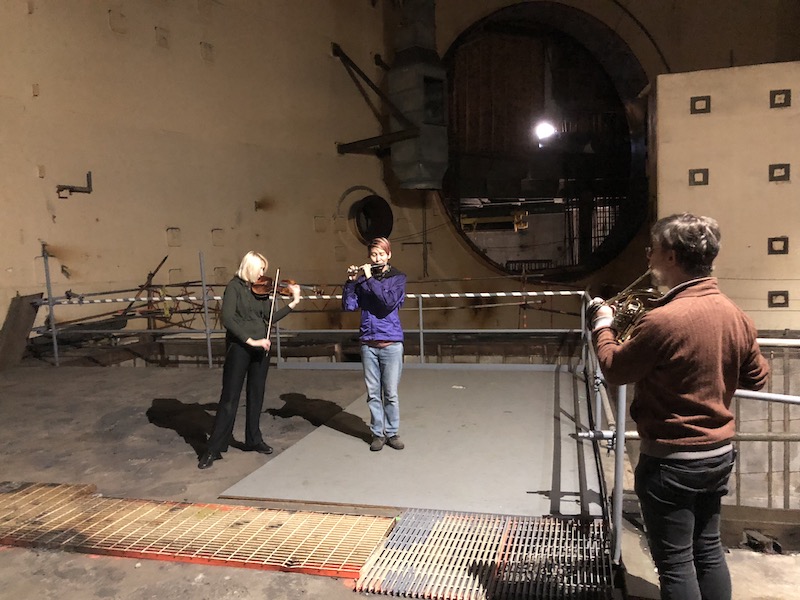
 girlbot@ewatrebacz.com
girlbot@ewatrebacz.com BabelScores
BabelScores Youtube
Youtube SoundCloud
SoundCloud